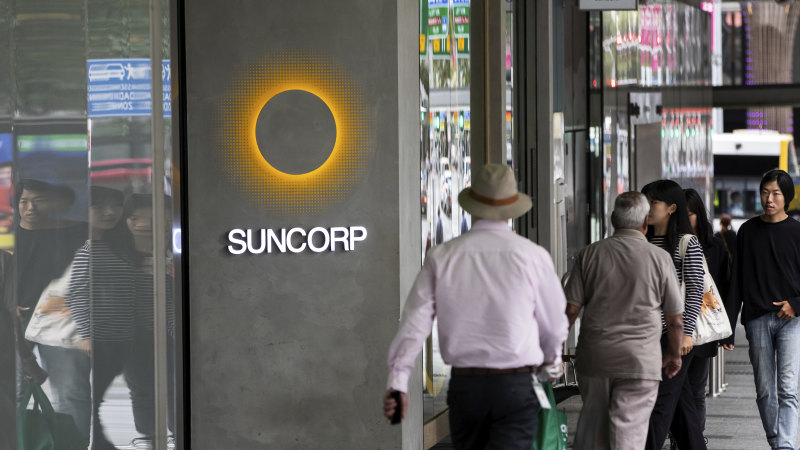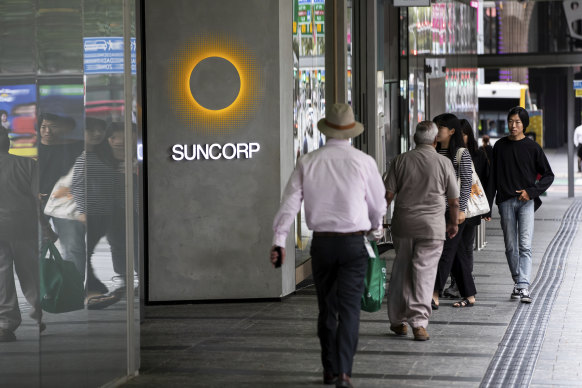Save articles for later
Add articles to your saved list and come back to them any time.
Suncorp chief executive Steve Johnston says insurance premiums are likely to continue shooting up in the next six months as the industry passes on higher reinsurance costs and deals with supply chain bottlenecks, but the pace of price rises could slow down after that.
Amid a parliamentary inquiry into insurance, including its affordability, Suncorp’s results on Wednesday showed its average written premiums for home cover had jumped 12 per cent in the year, while motor cover rose 13.5 per cent.
Johnston said the cost of motor insurance continued to be driven up by a lack of capacity in the car repair industry, where labour shortages meant it was taking much longer than usual to repair cars. From about late this year, he predicted some of these pressures would start easing, which would result in smaller premium rises.
Suncorp said that average written premiums for home cover had jumped 12 per cent in the year, while motor cover rose 13.5 per cent.Credit: Attila Csaszar
In home insurance, Johnson said premiums were climbing because of higher repair costs and more expensive reinsurance – where local insurance companies offload some of their risk onto global players. He said the pressure on prices from reinsurance markets could also start moderating in the second half.
“I think it will be a combination of a continuation of these levels for the first half, and then they’ll start to tail off in the second half,” Johnston said.
After the Australian Competition and Consumer Commission (ACCC) last week opposed Suncorp’s plan to sell its banking division to ANZ for $4.9 billion, Johnston dismissed the chances of a tie-up with rival Bendigo and Adelaide Bank, which the regulator sees as an alternative to the ANZ deal.
While the ACCC says Suncorp has extensively considered a Bendigo merger, Johnston maintained there was not a commercially viable deal between the two regional banks. One reason for this was that the Queensland government had specific requirements about branches and jobs, which would be threatened in a Bendigo-Suncorp merger, he said.
“A merger of two regional banks is heavily synergy-dependent. It’s the only way you can make it financially work, and synergies mean job losses, branch closures,” Johnston said.
Insurers have faced higher claim costs from more frequent and costly disasters in recent years, as well as inflation, prompting the government to recently call an inquiry into the sector.
Johnston said governments understood that Australian insurers were dependent on the global reinsurance market. But he also acknowledged the local industry had to make sure it could process claims efficiently, and that it could give customers the benefit of lower premiums when homeowners took steps to make their homes more resilient to natural disasters.
While there are concerns about more people cancelling their insurance cover in response to the higher costs, Johnston said he had not seen strong evidence this was occurring. People often respond to high insurance costs by increasing their excess, and Johnston said there had been a 4 per cent increase in excesses.
Overall Suncorp reported a sharp turnaround in its profits, with net profit of $1.15 billion, up from $681 million last year.
In Suncorp’s Australian insurance division, profits jumped by 334 per cent to $755 million, reflecting premium growth, higher returns on its investment portfolio and lower costs.
Suncorp will lift its final dividend by 50 per cent to 27c a share. Suncorp shares were down 1.8 per cent to $13.51 in afternoon trade.
Investors Mutual portfolio manager Michael O’Neill said the dividend was lower than some expected, but he said the company was being conservative.
“I think there was a bit of disappointment around the second-half dividend, although it’s understandable that they’ve taken a conservative approach in light of the delay in the bank sale process, as well as reinsurance negotiations,” O’Neill said.
The Market Recap newsletter is a wrap of the day’s trading. Get it each weekday afternoon.
Most Viewed in Business
From our partners
Source: Read Full Article

